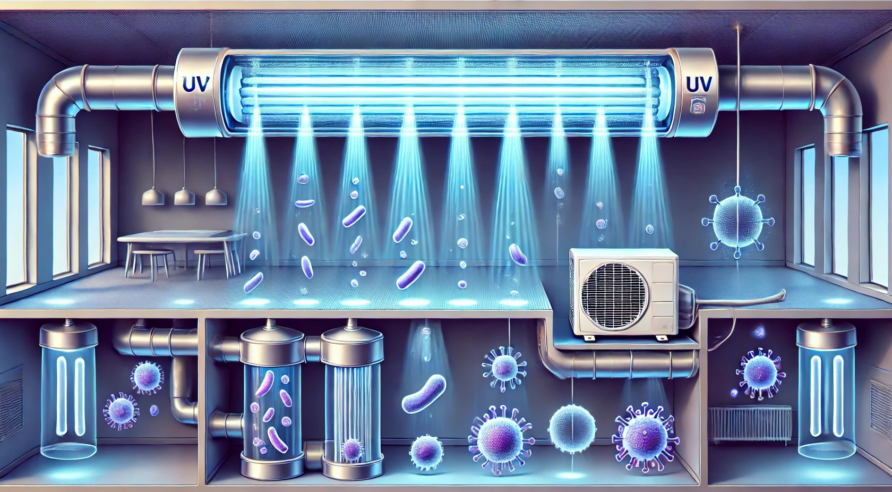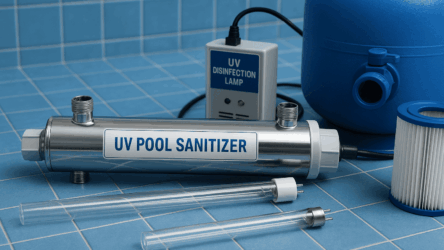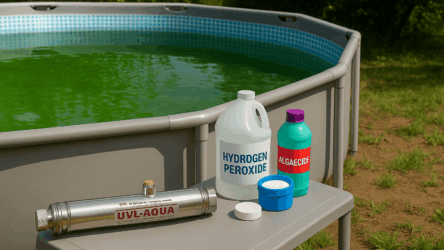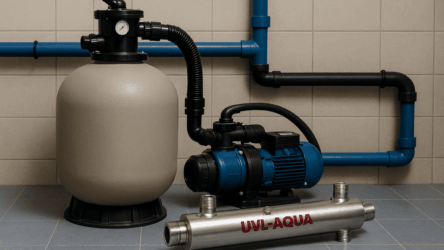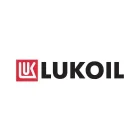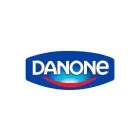Ultraviolet lamps are widely used to eliminate viruses and bacteria in both water and air environments. While they share the same disinfection principle—breaking down microbial DNA with UV radiation—their design and technical specifications differ significantly based on their intended application. Understanding these differences is crucial when selecting the right UV disinfection technology.
Key differences between UV lamps for air and water treatment
Although both water and air disinfection lamps rely on UV-C radiation (254 nm) to kill microorganisms, they are engineered to suit different environmental conditions.
UV lamps for water disinfection
- Designed to operate in constant contact with water, efficiently neutralizing bacteria, viruses, and parasites.
- Sensitive to temperature fluctuations—a sudden drop in temperature (such as exposure to air) reduces their power.
- Not suitable for air disinfection, as they are optimized for waterborne pathogens and enclosed water systems.
UV lamps for air disinfection
- Built to withstand active airflow and varying temperatures (5–30°C).
- Feature higher power output to effectively disinfect moving air streams.
- Often amalgam-based, ensuring stability, resistance to cooling, and extended operational life.
- Some models have a curved design to fit ventilation ducts, providing even UV distribution for air purification.
Air disinfection with UV lamps
Airborne pathogens are neutralized as they pass through ventilation systems equipped with UV lamps. The UV-C wavelength (254 nm) penetrates microorganisms, breaking their genetic structure and preventing reproduction.
UVL air disinfection lamps: FLOW and VOSUV series
UVL manufactures amalgam-based ANB and ANC lamps (FLOW and VOSUV models) designed specifically for air disinfection applications.
- FLOW series – Optimized for active air circulation, making them ideal for ventilation systems. These lamps disinfect passing air streams in ducts and HVAC units.
- VOSUV series – Designed for static air environments, ensuring effective disinfection in sterile rooms without active ventilation. The name VOSUV stands for Vacuum Optimized Sterilization UV, highlighting their efficiency in enclosed spaces.
Both models feature UVL-LivePower+ coating, which prevents radiation degradation and ensures consistent performance throughout the lamp’s lifespan.
For larger spaces, multiple lamps or higher-wattage models may be required to achieve optimal air purification.
The importance of UV air disinfection
UV air treatment is one of the most effective disinfection methods, eliminating up to 99.9% of airborne microorganisms. Unlike chemical treatments, UV sterilization:
- Leaves no residue – No byproducts or chemical pollutants.
- Does not require additional ventilation – Unlike ozone-based systems.
- Is safe for occupied spaces – When installed in ducted systems or UV recirculators.
Conclusion
UV disinfection technology plays a critical role in air and water sterilization, but choosing the right type of UV lamp is essential for effective results. UVL’s FLOW and VOSUV series lamps provide state-of-the-art air disinfection solutions, ensuring clean and safe environments for medical facilities, offices, public spaces, and other high-traffic areas.
For advanced and reliable UV air purification, UVL offers customized solutions tailored to specific ventilation and air quality requirements.

